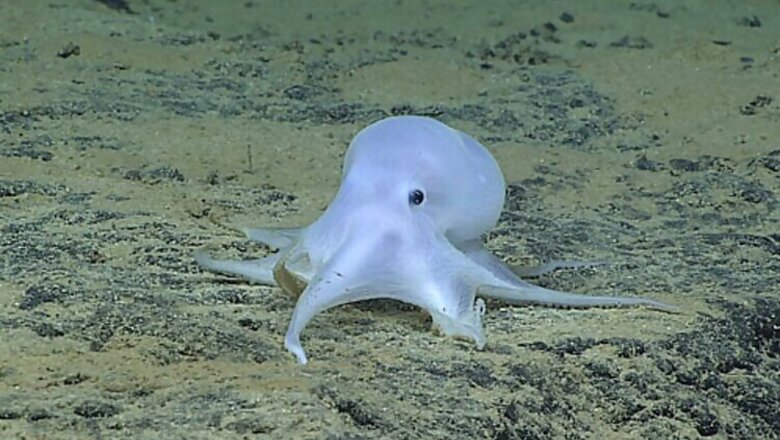
views
Washington: Scientists have discovered a 'ghost-like' octopus near the Hawaiian Islands which they say may be an entirely new species.
On February 27, researchers explored depths of over 4,000 metres northeast of Necker Island in the Hawaiian Archipelago. A remotely operated vehicle (ROV) Deep Discoverer surveyed biological communities in the area, said Michael Vecchione of the National Oceanic and Atmospheric Administration (NOAA).
As the ROV was traversing a flat area of rock interspersed with sediment at 4,290 metres, it came across a remarkable little octopod sitting on a flat rock dusted with a light coat of sediment.
The appearance of this animal was unlike any published records and was the deepest observation ever for this type of cephalopod, researchers said.
Deep-sea octopods are easily separated into two distinct groups: the cirrate, or finned, octopods, characterised by fins on the sides of their bodies and fingerlike cirri associated with the suckers on their arms and incirrate octopods, which lack both fins and cirri and are similar in appearance to common shallow-water Octopus.
The octopod imaged in detail was a member of the second group, the incirrates. A distinctive characteristic was that the suckers were in one, rather than two, series on each arm.
This animal was particularly unusual because it lacked the pigment cells, called chromatophores, typical of most cephalopods, and it did not seem very muscular. "This resulted in a ghostlike appearance, leading to a comment on social media that it should be called Casper, like the friendly cartoon ghost," Vecchione said.
"It is almost certainly an undescribed species and may not belong to any described genus," he said. Cirrate octopods have been reported to depth of over 5,000 metres. However, the deepest published reports for incirrates are all less than 4,000 metres.
"We are now considering combining this observation with some other very deep incirrate observations by a German cruise in the eastern Pacific into a manuscript for publication in the scientific literature," said Vecchione, who is with NOAA's National Systematics Laboratory.

















Comments
0 comment